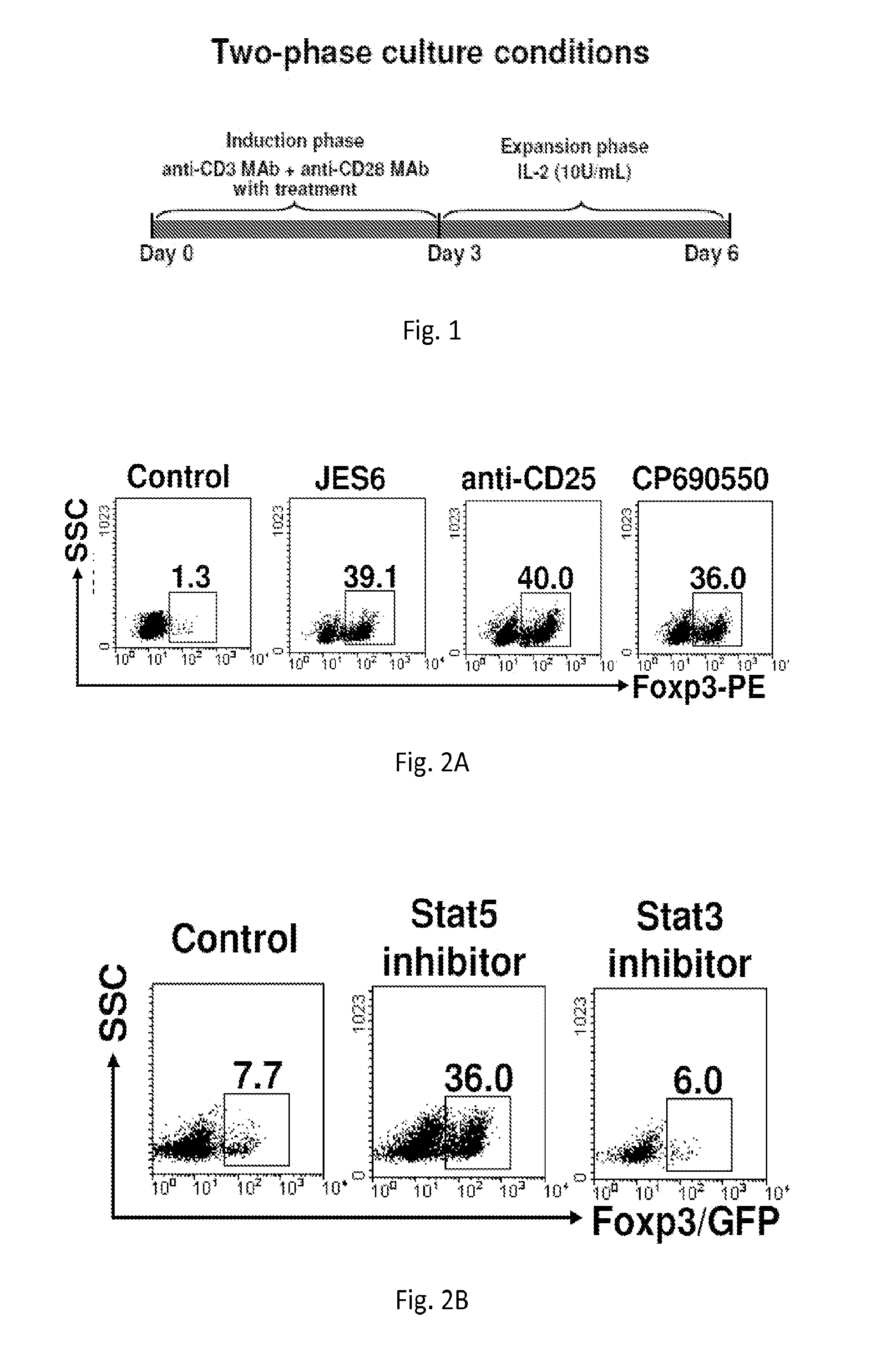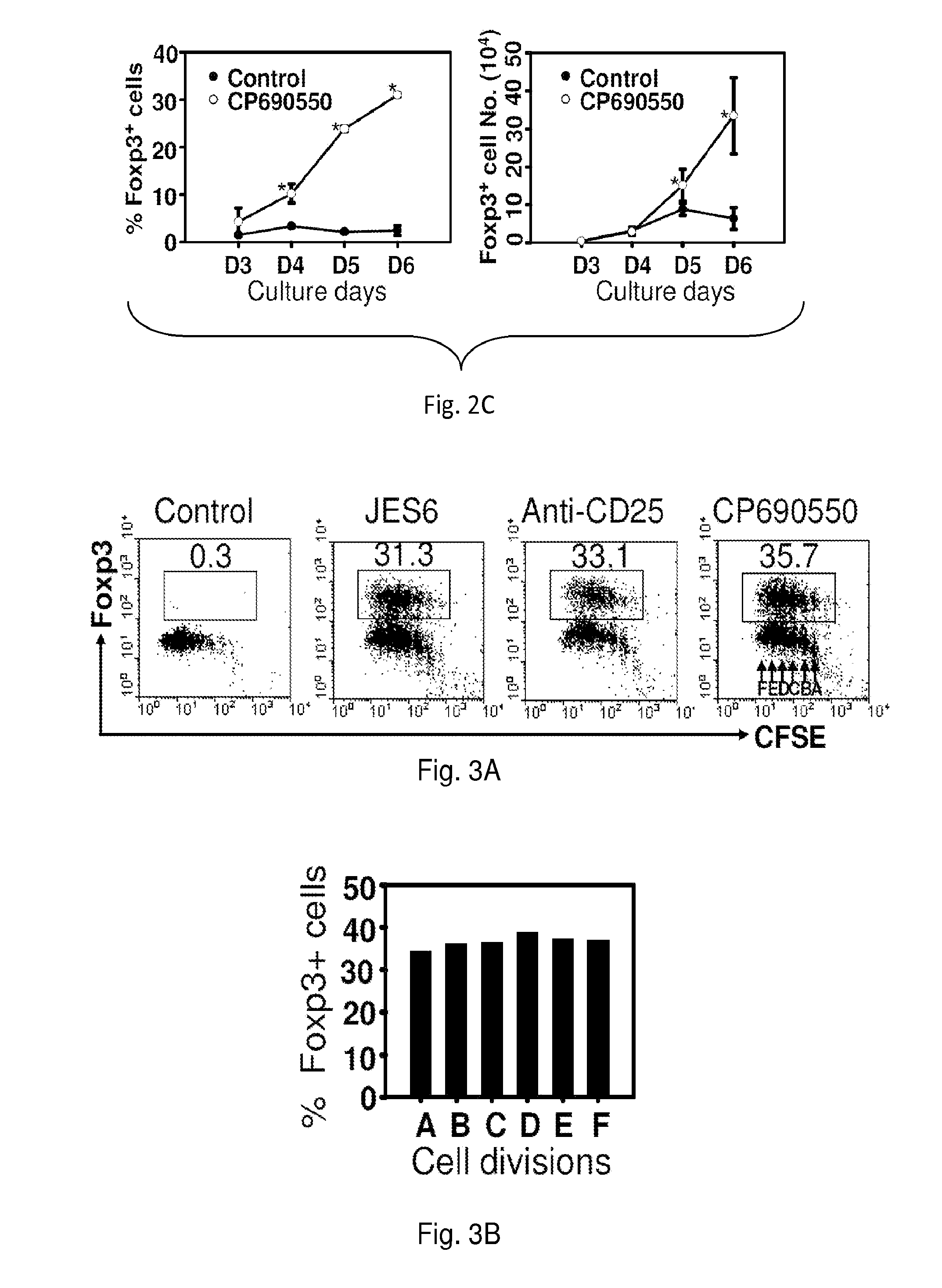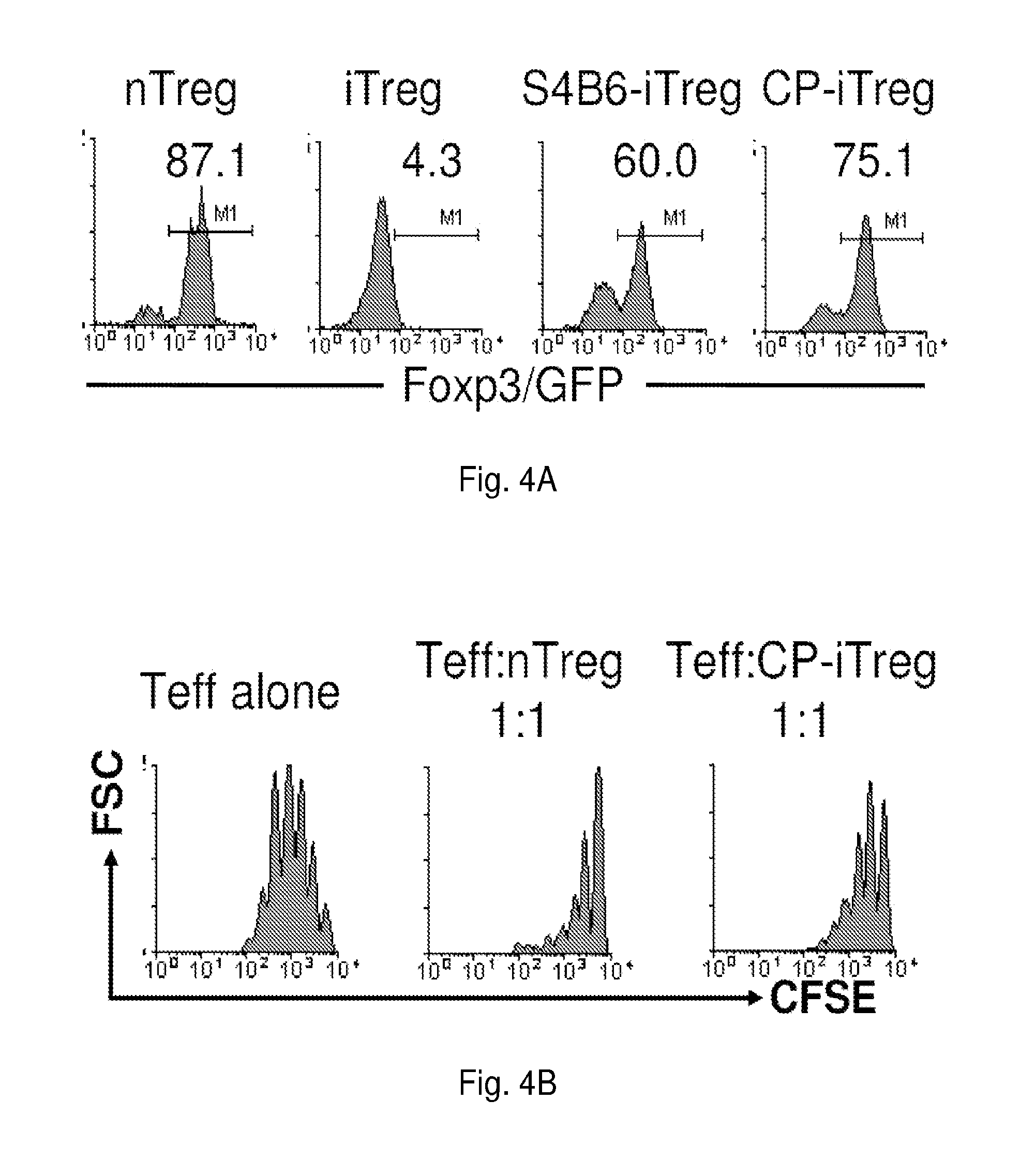Stable Tregs and Related Materials and Methods
a technology of stable tregs and related materials, applied in the field of cell culture technology, can solve the problems of unstable itregs, unreliable methods, and easy loss of foxp3 expression and suppressor function, and previous solutions have proved unreliable, so as to reduce the risk of adhesion and reduce the risk of neurological symptoms
- Summary
- Abstract
- Description
- Claims
- Application Information
AI Technical Summary
Benefits of technology
Problems solved by technology
Method used
Image
Examples
example 1
Method 1
[0191]Naïve CD4+ Foxp3 / GFP− cells (1×106 / ml) cultured in a standard culture medium were stimulated with anti-CD3 monoclonal antibody (mAb) / anti-CD28 MAb in the presence 5 μg / ml anti-IL-2 mAb, or 5 μg / ml anti-CD25 mAb, or 100 nM Janus tyrosine kinase (Jak3) inhibitor (CP-690,550) for 3 days (induction phase). Following washing of cells, medium was replaced with a fresh culture medium supplemented with 10 units / ml recombinant (r)IL-2 and cultured for additional 3 days (expansion phase). In these unique two-phase culture conditions, 36-40% CD4+ Foxp3 / GFP− cells were converted into CD4+CD25+Foxp3 / GFP+ iTregs in comparison to 1.3% in controls (FIG. 2A) Similarly, 100 ng / ml Stat5 inhibitor (Stat5 inhibitor) converted 36% of naïve CD4+ Foxp3 / GFP− cells into CD4+CD25+Foxp3 / GFP+ iTregs compared to 7% in untreated controls (FIG. 2B).
[0192]Repeated experiments also showed that an initial 3-day exposure of activated CD4+ Foxp3 / GFP− cells to CP-690,550 induced an 8-fold expansion in the ...
example 2
Method 2
[0195]Naïve CD4+ Foxp3 / GFP− cells (1×106 / ml) cultured in standard culture medium are stimulated with anti-CD3 mAb / anti-CD28 mAb in the presence of 5 μg / ml anti-TCRβ mAb for 3-4 days. Following stimulation, medium was replaced with the fresh culture medium supplemented with 10 units / ml rIL-2 and cultured for next 3-4 days. The two-phase culture conditions with anti-TCRβ mAb converted CD4+ Foxp3 / GFP− cells into 19.7% of Foxp3 / GFP+ cells compared to only 2.5% in controls (FIG. 5). The stability (Foxp3 expression) of TCRβ-induced iTregs was compared with TGF-β-induced iTregs (not shown). The results confirmed that repeated re-stimulation of TCRβ-expanded iTregs maintained expression of Foxp3 and suppressor function.
example 3
Method 3
[0196]Naïve CD4+ Foxp3 / GFP− cells (1×106 / ml) cultured in standard culture medium with syngeneic APCs were stimulated with anti-CD3 mAb in the presence of 5 μg / ml anti-CD11a mAb (P532) for 3 days. Following washings, medium was replaced with a fresh medium with 10 units / ml rIL-2 and cultured for next 3 days. The unique two-phase culture conditions converted 73.3% of CD4+ Foxp3− cells into CD4+CD25+Foxp3+ iTregs (FIG. 6; left panel) whereas controls were ineffective (FIG. 6; right panel).
[0197]The stability (Foxp3 expression) of anti-CD11a-mAb-induced iTregs was confirmed in comparison with TGF-β-induced iTregs (not shown). In particular, re-stimulated anti-CD11a mAb-induced iTregs maintained Foxp3 expression in contrast to TGF-β-induced iTreg cells.
[0198]These results confirmed that stimulation with anti-CD11a mAb in the inventors' unique culture conditions promoted generation of stable iTreg cells.
PUM
| Property | Measurement | Unit |
|---|---|---|
| time | aaaaa | aaaaa |
| molecular weight | aaaaa | aaaaa |
| molecular weight | aaaaa | aaaaa |
Abstract
Description
Claims
Application Information
 Login to View More
Login to View More - R&D
- Intellectual Property
- Life Sciences
- Materials
- Tech Scout
- Unparalleled Data Quality
- Higher Quality Content
- 60% Fewer Hallucinations
Browse by: Latest US Patents, China's latest patents, Technical Efficacy Thesaurus, Application Domain, Technology Topic, Popular Technical Reports.
© 2025 PatSnap. All rights reserved.Legal|Privacy policy|Modern Slavery Act Transparency Statement|Sitemap|About US| Contact US: help@patsnap.com



